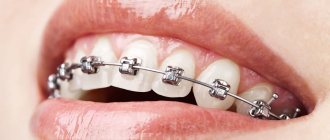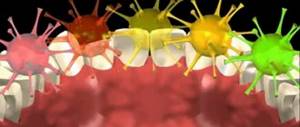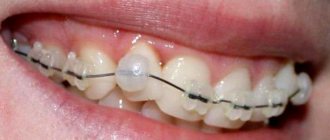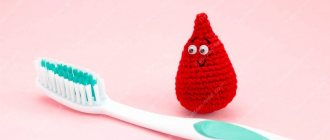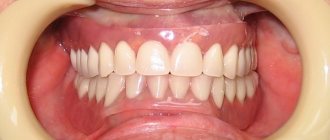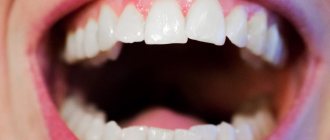A problem in which the blood does not clot well is called a bleeding disorder. It is caused by the fact that blood vessels do not normally become blocked when they are damaged. When everything is fine, when there is bleeding at the wound site, the blood begins to thicken, which prevents large losses. But sometimes this complex mechanism fails, resulting in severe or prolonged bleeding. When blood does not clot well, this does not always lead to external loss. It can also appear as bleeding under the skin or in the brain.
How to stop bleeding from a finger?
The fact is that every housewife should have in her first aid kit:
- Hydrogen peroxide
- Iodine
- Bandage
- cotton wool
- Furacilin
- Tourniquet
- Plasters
- Cotton pads
After all, during an injury, there will be no way to bandage the wound if you don’t find the simplest dressing materials in the first aid kit. It is necessary to assess the depth of the cut. If the damage is caused by a knife, and it is shallow, then you need to put your finger under a stream of ice water for a couple of minutes. Next, using a cotton pad, squeeze your finger tightly and wait about 3 minutes. After this, the affected area is treated with an antiseptic. It could be iodine or hydrogen peroxide. Next, a bandage is applied and the finger is sealed with a plaster.
Pay attention to the sensitivity of the limb. If you feel that your finger does not bend so well, or there are any problems with sensitivity, be sure to consult a doctor. You may have damaged a tendon or nerve endings during your injury, which requires immediate surgery. To avoid the occurrence of abscesses, after the initial treatment with an antiseptic, after a while, when a crust appears on the surface of the damage, treat the area with peroxide again. Doctors do not recommend using iodine to stop blood flow, because the substance dries the skin and can cause cracks and itching in the area of damage.
Blood flows
Symptoms
Main symptoms of the disease:
- Skin rashes. Depending on the cause of poor coagulation, both small pinpoint hemorrhages (petechiae) and extensive hematomas may appear on the skin.
- Nosebleeds.
- Hemorrhages in the mucous membranes of the mouth, nose, and intestines. The latter option can lead to the appearance of blood in the stool.
- Hemorrhages in the brain. Occurs with fragility of blood vessels and low blood clotting.
- In the event of an injury, cut, or bruise, the bleeding does not stop for a long time.
- Hemorrhages in joints, muscles and internal organs can be observed with the hereditary disease hemophilia. Bruises (hematomas) can form even with minor mechanical damage.
How to stop bleeding from a finger with a deep cut?
You need to do things a little differently. The fact is that under the influence of a stream of ice water, blood may increase even more.
Instructions:
- Under no circumstances should you put your hand under a stream of ice water. The ideal option is to soak a cloth in cold water and apply it to your finger for a few minutes.
- Next, treatment is carried out with an antiseptic and a tight bandage is applied.
- You need to try to close the pieces of the wound to each other as close as possible. This will speed up the tightening and healing of the wound
If you work in the country, you should have a first aid kit, dressings and the simplest antiseptics with you. They will help stop and disinfect the damage.
Deep damage
Dirty blood: causes, symptoms, treatment of sepsis
Squeezing a pimple and getting sepsis is a reality for people with weakened immune systems. A bacterial infection that causes inflammation of the sebaceous gland can invade healthy tissue and blood. In this case, new ulcers will appear next to the squeezed pimple, and the pimple itself will turn purple and increase in size. If you do nothing, the source of inflammation will expand, covering new areas.
Leukocytes are always on guard
Of course, the immune system is not asleep. As soon as the integrity of the skin and blood vessels is compromised, leukocytes - neutrophil granulocytes and macrophages - rush to the wound. This is the first, inflammatory phase in the healing mechanism.
The task of leukocytes is to destroy pathogenic microorganisms (phagocytosis of foreign material, cells) and cleanse the wound. Also at this stage, bleeding stops due to the formation of a fibrinous clot from platelets, red blood cells and fibrin threads.
The proliferative phase involves the restoration of affected tissues. The wound site is filled with granulation material built by fibroblasts.
At the final stage, a scar is formed. Epithelization of the restored area is also underway.
Staphylococci - a source of inflammation
The immune system deals quickly with ordinary bacteria. Another thing is pyogenic microorganisms, such as staphylococci, streptococci, meningococcus, gonococcus, Pseudomonas aeruginosa, E. coli. Having the ability to attach to each other, they turn into large objects. As a result, macrophages cannot cope with them. It is also important that pyogenic bacteria have a high division rate.
The presence of abscesses, boils, and carbuncles does not mean a 100% chance of developing sepsis. Generalized inflammation is promoted by immunodeficiency resulting from severe illness, severe blood loss, surgery, poor nutrition, or use of immunosuppressive drugs.
Symptoms of blood poisoning
Regardless of the strain of the bacterial pathogen, the clinical picture of sepsis is the same:
- elevated temperature;
- chills, excessive sweating;
- low blood pressure;
- migraine-like headache;
- arrhythmia (more than 90 heart beats per minute);
- dyspnea;
- weakness,
- lack of hunger;
- nausea, vomiting;
- rash;
- large foci of inflammation in the form of reddened, swollen areas; purulent exudate may flow from the wound.
The conglomeration of symptoms depends on the location of infection and the intensity of development of the bacterial infection.
Therapeutic measures for sepsis
Septic shock is the most severe consequence of blood poisoning, as it is life-threatening. In this condition, a person’s blood supply to organs is disrupted. To prevent this from happening, the patient must be treated immediately after symptoms of infection appear. Otherwise, infectious pathogens will spread throughout the body and a purulent inflammatory process will affect bone, muscle tissue, and the brain.
Open purulent wounds are treated by removing exudate and necrotic formations. Affected tissues are regularly treated with antiseptics (levomekol) and antibiotics (amoxicillin). If the inflammation is hidden and is not accessible for surgical treatment, powerful antibacterial drugs are prescribed. Since pyogenic microorganisms quickly adapt to antibiotics, it is necessary to identify their sensitivity to the drugs used.
In addition, measures are taken to strengthen the patient’s immune system. This includes: high-calorie nutrition, the use of autovaccines, blood transfusions, and the use of immunostimulants. Timely elimination of pathogenic factors in the case of sepsis helps the patient get back on his feet.
How to stop bleeding from a finger when cut by glass?
The situation is complicated by the fact that there may be pieces of glass in the wound. Accordingly, you need to try to pull them out.
Instructions:
- This is done using tweezers. Do not try to widen the edges of the wound under any circumstances. This increases bleeding
- If you cannot cope, you need to apply a dressing and go to the hospital so that doctors can remove the glass from the wound
- If you don't do this, infection may set in and the wound may become infected.
- After you remove the glass, you must again try to close the edges of the wound, pulling them towards each other, and treat the damage with an antiseptic
Deep damage
Treatment
For treatment of this condition to be effective, the causes of the disease must be determined. It is very important to promptly identify and treat the main disorders - liver pathologies or oncological lesions.
Additional therapy methods include:
- injection of vitamin K;
- drugs to improve clotting;
- transfusion of frozen blood plasma;
- Other medications include hydroxyurea and oprelvekin, which help eliminate platelet problems.
The patient's diet should include foods high in calcium, folic acid, vikasol, and amino acids. These include dairy products - cheese, cottage cheese, kefir. Fish and meat will also help eliminate the symptoms of pathology. It is equally important to eat leafy vegetables - green onions, spinach, cabbage.
How to stop blood from a finger if it is flowing and pulsating?
With deep damage, pulsation may be observed. This is due to the fact that you may have hit a blood vessel or a large capillary. This causes blood to flow in the same way as your heart beats. Stopping this type of bleeding is difficult.
Instructions:
- You need to take a wet and cold cloth, wrap it around your finger and raise your hand up so that it is above the level of your heart.
- This will reduce blood flow to the finger and it will gradually begin to flow more slowly.
- After the bleeding has stopped a little, it is necessary to pull the edges of the wound towards each other
- In this case, it is best to use very thin strips of adhesive tape.
- Cut them like noodles and stretch the edges of the wound from one side to the other
- This way you will be able to bring the edges of the skin as close as possible.
Affected area
Apply a tourniquet:
- An excellent option to stop bleeding is to apply a tourniquet. If you don't have one, a piece of cloth or bandage will do.
- It is necessary to tie a bandage tightly at the base of the finger. The criterion for how tightly to tie will be stopping the bleeding
- If this happens, then everything is fine. Remember that the time and duration of such a dressing should not be more than 2 hours in summer, and more than one hour in winter
- The fact is that if blood does not flow to the finger for a long period of time, tissue necrosis may begin.
- You risk being left without a phalanx or even the entire finger
Deep cut
How can I stop bleeding from my finger when I get a cut if it doesn't stop?
It happens that due to strong pressure, or a deep cut, the blood flows and does not stop. This may be due to the person taking blood thinning medications. The bleeding should stop within 5 minutes. If this does not happen, action must be taken.
Adviсe:
- In case of deep damage, there is no need to put the damaged area under water and wash it
- You will need to apply a tourniquet or very tight bandage slightly above the area where the cut occurred.
- Raise your hand above your head and hold it for some time.
- In this position, blood will flow into the finger in a much smaller volume, which will provoke a blood stop and the appearance of a blood clot in this place
- As soon as a clot appears, there is no need to fill the wound with hydrogen peroxide. Because air bubbles can cause bleeding
- In this case, it is best to wrap a little cotton wool around a toothpick or use an ear stick
- Soak in iodine solution and lubricate the edges of the damage, bringing them as close as possible to each other
- Next, a sterile bandage is applied and the affected area is compressed.
Deep wound
Drugs to stop bleeding:
- Vikasol
- Vitamin P
- Epsilon-aminocaproic acid
- Medical gelatin
- Fibrinogen
- Trasylol
- Protamine sulfate
- Hemophobin
Affected areas
If the bleeding does not stop for more than 10 minutes, you must call an ambulance and go to the hospital. In such cases, an injection of hemostatic drugs is often given, which help improve blood clotting.
Causes
Bleeding disorders are divided depending on the etiology - acquired, genetically determined and congenital, as well as autoimmune. Blood clotting disorders can be caused by hereditary pathologies, but not only. Genetic diseases can also influence the development of the disease. For example, a newborn baby may be diagnosed with hemophilia or von Willebrand disease. Also, the disorder can be caused by a lack of vitamin K. In addition, such problems can be a consequence of cancer of the liver and other organs. Most often, bleeding disorders occur due to infectious hepatitis or scarring, which usually occurs with cirrhosis. Long-term use of strong antibiotics or drugs to treat blood clots can also cause bleeding problems.

